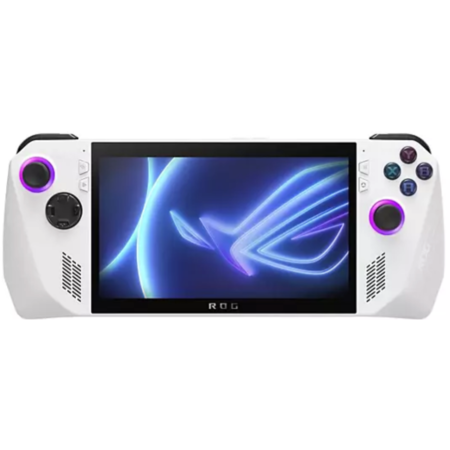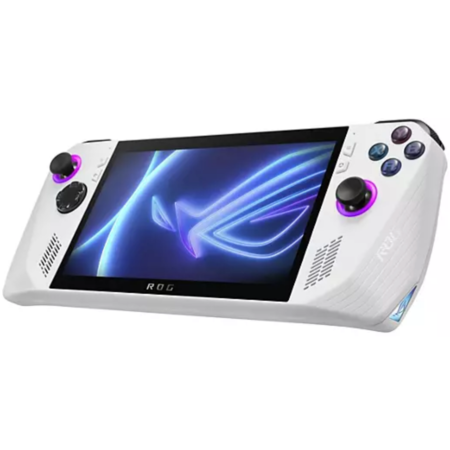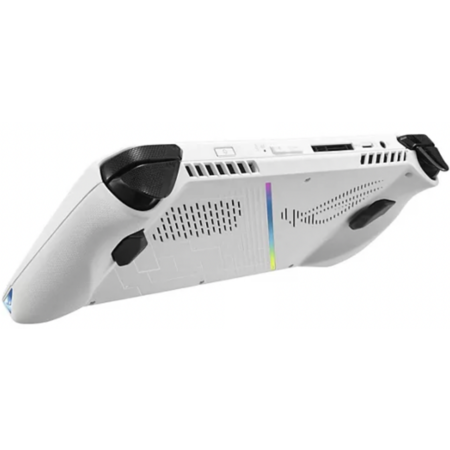Sam's Club has for its
Members:
512GB ASUS ROG Ally 7" AMD Ryzen Z1 120Hz FHD 1080p Gaming Handheld (RC71L-ALLY.Z1_512) on sale for
$379.
Shipping is free for Plus members, otherwise shipping will vary by location.
Thanks to community member
Pooperscooper for finding this deal.
About this Item:
- Access any game that runs on Windows across all game platforms, including Steam, GOG, Xbox Game Pass, cloud gaming services, Android apps and more.
- Specs:
- 7" 1920 x 1080 FHD 120Hz 7ms 500-nit Display
- AMD Ryzen Z1 6-core, 12 threads (3.2GHz Base / 4.9GHz Boost) Processor
- 16GB LPDDR5 RAM
- 512GB M.2 PCIe 4.0 NVMe Solid State Drive
- Wi-Fi 6E 2*2 + Bluetooth 5.2
- Built-in Fingerprint Sensor
- Windows 11 Home
- Ports:
- 1x 3.5mm Combo Audio Jack
- 1x ROG XG Mobile Interface and USB Type-C combo port (with USB 3.2 Gen2, support DisplayPort 1.4)
- 1x UHS-II microSD card reader





Leave a Comment
Top Comments
71 Comments
Sign up for a Slickdeals account to remove this ad.
Yeah. Not a chance haha. This is a better price than the typical Best Buy $399.99. There was a point when Best Buy had it for $299.99 and that lasted for something like 6 hours overnight before they shot it up to $399.99 a few weeks ago. Not sure if that will happen again until the ROG Ally 2 is near release.
Sign up for a Slickdeals account to remove this ad.
I don't plan on using Windows much on my deck so I've been looking at just flashing a W11 boot off a flash drive, sd card, or definitely preferably due to lifecycle, an external sdd.
I have had the Steam Deck since launch and I haven't had much problems with Linux that made it so I can't play a game. Granted there are a lot of games I don't considerable playable on the Steam Deck because the hardware is poor vs competitors but software is great.
Which, I kind of can't believe that I'm saying Valve support is amazing, but that's just what it is. I've had friends botch an install of custom hall effect sticks on their board and Valve replaced the unit anyway.
I'd absolutely suggest, if you can, getting the 64 and adding memory as needed, especially with how cheap it is, and just how well supported the deck is overall.
Sometimes you do have to bump down resolution or graphics settings to get a good frame rate but that rarely, if ever bothers me. I'm also playing 100% in handheld mode. If I was outputting to a monitor we might be having a different conversation.
One setting that can really make a huge difference in SD performance is changing the VRAM to 4GB in the BIOS. (can also hurt performance in a few games, but does help the vast majority of others.)
Sometimes you do have to bump down resolution or graphics settings to get a good frame rate but that rarely, if ever bothers me. I'm also playing 100% in handheld mode. If I was outputting to a monitor we might be having a different conversation.
One setting that can really make a huge difference in SD performance is changing the VRAM to 4GB in the BIOS. (can also hurt performance in a few games, but does help the vast majority of others.)
I will give it to you I have not done any tinkering on VRAM or TDP adjustments like some people suggest on protondb and my experiences is all OOB.
Many times (this is for all computer games regardless of PC, laptop, or handheld) changing one setting can sometimes net you 30-50% better performance without changing overall settings to low or even medium. For example in Fallout 3, 4, 76. Things like rendering distance for buildings, foliage, etc can be slid dramatically down causing FPS to sky rocket. The computer is rendering objects you cannot see on a 7" screen, heck, you probably couldn't see them on a 15.6" laptop either but your frame rates are tanking because you are rendering trees 2 miles away (looks amazing at 1440p on a 34" monitor though). Another setting (which does lower quality though) is shadows. Turn them down to the middle-ish setting, whatever that game calls it, can make a big difference. I don't mind but other people might. In Borderlands 3 lowering shadows quality made a big difference but shadows also got pretty jagged after the change. Weirdly so. Netted 30+ FPS per second so to me it was worth the change.
Oh, and anti-aliasing is a biggie. Personally I cannot tell the difference (in most games) between anti-aliasing x2, 4x, 8x, or 16x on a small screen. Why are you wasting all that computing power? Drop it down and see how that looks.
A setting or two can completely avoid the need to run a game at a lower resolution or overall quality setting.
TDP (I think) is mainly to save power on retro or indy games that do not need full power to run. I used to use that on my pre-OLED check with sucky battery but now with the OLED I do not bother because the battery life is so great. There might be a way to tweak the TDP for better performance but I have never heard of it. TDP is easy to change, there is a slider on the right popup menu [overkill.wtf]. Also a "defaults" button if you feel like you messed something up. "Per game settings" keeps all tweeks in this menu to that game so you do not need to remember from game to game what works.
/rant
Sometimes you do have to bump down resolution or graphics settings to get a good frame rate but that rarely, if ever bothers me. I'm also playing 100% in handheld mode. If I was outputting to a monitor we might be having a different conversation.
One setting that can really make a huge difference in SD performance is changing the VRAM to 4GB in the BIOS. (can also hurt performance in a few games, but does help the vast majority of others.)
Otherwise and subjectively I would say the Deck runs better across the board changing from the default VRAM settings to 4GB but have no data to back that up. When I upgraded to the OLED I thought there was something wrong with my new SD because I picked up playing the same games as my old non-OLED, the games seemed to play worse even if the OLED had slightly better performance on paper. Then I remembered to change VRAM and things got super peppy again. Again, this is a subjective observation.
Also some people claim changing to 2GB is a happy medium as well. There are also things like CryoUtilities that are supposed do wonders beyond messing with VRAM but that level of tinkering is past what I feel like doing.
Sign up for a Slickdeals account to remove this ad.
Leave a Comment